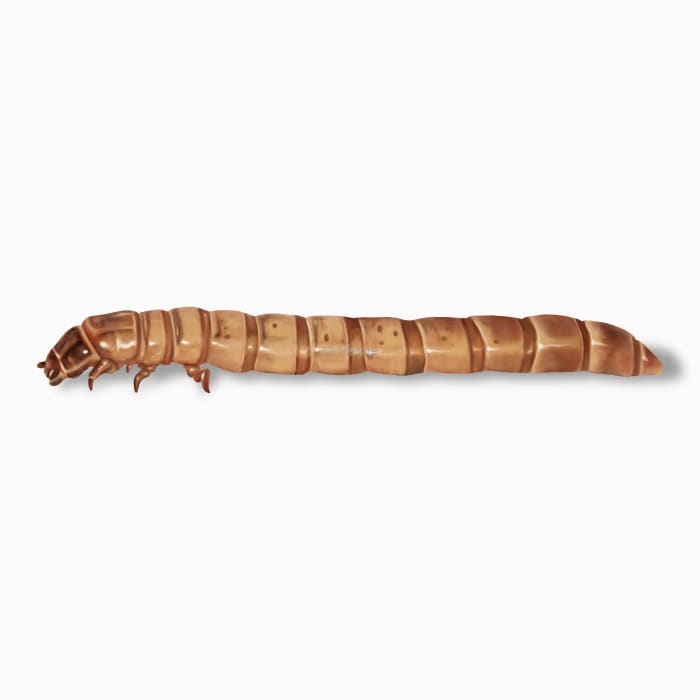How to identify and get rid of mealworms

Tackling mealworm infestations in your pantry and home
Let's talk about mealworms – those uninvited critters that seem to love our pantries as much as we do! If you've ever found these little wrigglers in your cereal box, you know they’re more than just a nuisance; they’re a full-fledged snack-ruining squad.
Mealworms aren’t worms at all, but darkling beetles. While they are normally raised to feed pets, like reptiles and birds, sometimes they can find their way into stored products like flour, oatmeal, grains, or dried fruit. They can quickly ruin your food and females can lay up to 500 eggs at one time. That leads to a big problem if left unchecked for too long.
How to identify mealworms
While they look like wriggling worms, mealworms are actually the younger version of darkling beetles. They typically have a long, segmented body with 6 small legs near their head.
In terms of color, mealworms are generally golden-brown, which can vary slightly depending on their diet and environment. They also have a round head with small, black eyes.
How big are mealworms?
Mealworms are between 1/8th inch to 1 inch long.
What other pests look like mealworms?
Not very many other pests look like mealworms, but the buffalo worm or lesser mealworm can be mistaken for mealworms. However, the buffalo worm is much smaller and darker.
Where do mealworms live?
Apart from pantries, kitchens, and food storage areas, mealworms are typically found near damp, moldy, or rotten materials. This can include under leaf litter or rotten vegetation.
How to get rid of mealworms
Mealworms can become a problem in food products if they are not stored properly. The best way to keep your food uncontaminated is to seal up cereals, grains, flour, or oatmeal in an airtight container.
Mealworms have been known to chew through cardboard and paper packaging, so metal or plastic containers are best.
If you find mealworms in your stored food products, discard the food immediately. You can also freeze the infected food to prevent any new infestations from hatched eggs. Make sure to clean up any food spills as well.
Here are a few tips to prevent mealworms from coming inside your home:
- Remove organic material from around the perimeter of your home (leaves, compost, old vegetation)
- Seal any cracks or gaps around your house
- Establish a bug barrier with a perimeter spray inside and outside the home
Pestie offers a pro-grade, DIY solution that is delivered to your home. In just 10 minutes, you can protect your home from mealworms and other insect invaders.
Treat mealworms with Pestie
If you're still having trouble keeping mealworms away, the best option is to use a pro-grade, effective pest control solution like Pestie.
Pestie is a do-it-yourself pest control solution that's specially designed to keep mealworms and other pests away from your home.
With Pestie, you can rest easy knowing that your living space is protected and free of creepy crawlies. And the best part? It's designed for people, pets, and the planet, so you can say goodbye to harsh chemicals and hello to peace of mind!
- Save hundreds compared to traditional annual pest plans
- People, pet, and planet-friendly
- Pro-grade customized formulas
Quick facts
- Scientific name
Tenebrio Molitor
- Other common names
Mealworm Beetles
- Colors
Organic materials, cereals, grains, flour, oatmeal, dried fruit
- Life span
1 year
- Diet
Organic materials, cereals, grains, flour, oatmeal, dried fruit
How dangerous are Mealworms?
Low danger risk
Mealworms aren’t dangerous to humans or pets. They don’t carry any diseases either. They are used as pet food and are even used in some products for humans to eat!
Mealworms can eat and digest polystyrene and polyethylene plastics. It takes 4000 mealworms one week to eat a Styrofoam cup!








